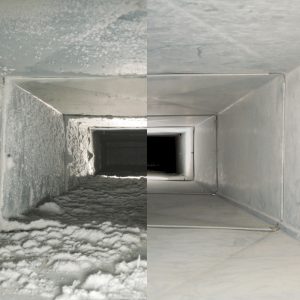DIY Ducted Heater Cleaning
With Winter nearing it’s a good idea to carry out maintenance and cleaning on your Ducted Heating system. One of the best ways to reduce dust that collects on all our surfaces is to clean out our ducted heaters and can also save you money!

The Benefits of Cleaning your ducts, Why go to the trouble?
There may be months of the year where your air conditioning doesn’t get used and begins to collect dust. Breathing dust isn’t healthy for the home and there are significant health benefits in having clean ducts. If anyone in your household has allergies, the dust can act as an aggravator.
Prolong the life of your heating system. Build up of dust means air duct systems stop operating efficiently. If they build up too much debris through the year, the machinery can get clogged and has to work much harder to do its job, costing you more energy. Over time, the extra energy expended by the working parts will gradually wear them down, and your system’s lifespan will be cut short.
Save yourself money! Clean heaters use less energy and save you money on your energy bill, but the cleaning process may seem daunting to some. Many ducted heater owners believe they need to pay steep prices to have professionals do the job. In fact, anyone can clean their own heating systems and bypass the use of fancy tools that come with a fancy price tag. All you need is a few simple items we’ve listed below.
Bypass the pros and save money by cleaning ducted heating yourself:
With a few simple household materials and a short, step-by-step routine, you’ll be on your way to clean air, clean ducts, and a bunch of money saved.
What you need when cleaning your air ducts:
- Furnace filters. Make sure you change your furnace filter twice a year and your Spring cleaning will be a much simpler. One of the best methods of cleaning is prevention.
- A vacuum with a hose.
- A toilet brush or any stiff bristle cleaning brush.
- A screwdriver or hex driver that fits the fasteners on your system.
- Old rags or paper towels
Step-by-step Cleaning tips:
- Use old rags or paper towels to cover the vents that pump out air into each room (these are called registers).
While you’re cleaning the ducts, loose dust can float out of the vents. Save yourself the extra cleaning and keep the registers covered with a paper towel or an old rag.
- Turn off the heating and cooling but turn on the fan. This helps loosen up dust so it’s easier to clean.
- Use your cleaning brush to liberate dust that may be stuck to the inside of the duct. This will help clear out extra debris from the duct and direct it towards the registers.
- Clean both the supply and return registers.
Remove the paper towels/old rags and vent grates. While the vent grates are removed give these a good scrub with soap and water as well as inside the registers themselves. Use your vacuum hose to get most of the dust then wipe up with a damp cloth afterward. You don’t need the paper towels or old rags anymore, just replace with clean vents grates.
For the return vents (usually mounted higher up on the wall), you may need to unscrew the grates to remove them. Afterwards, sweep out as much dust as you can manage inside the vent and then replace the grates.
- Clean the blower compartment. Make sure the power is off, remove the furnace panels, and vacuum as much dust as you can from the compartment. This is usually the site of the most debris build up.
- Make sure all vents and panels are securely back in place, replace any old filters, and you’re good to go! In a few steps, you’ve improved your air quality, prolonged the life of your heater, and saved yourself the cost of a professional cleaner.
When is professional cleaning appropriate?
In most cases, you should be able to clean your own ducted heating system using the steps above. In some cases, it may be important to call in the professionals.
If you suspect there is mould growing inside your duct, or there may be vermin living in your system, don’t try removing them yourself. Make sure you call in the appropriate type of cleaning service that will give you a quote and explain what they will do before the job.
If you have any questions please don’t hesitate to give Sumo a call on 13 88 60 to speak to one of our energy experts.